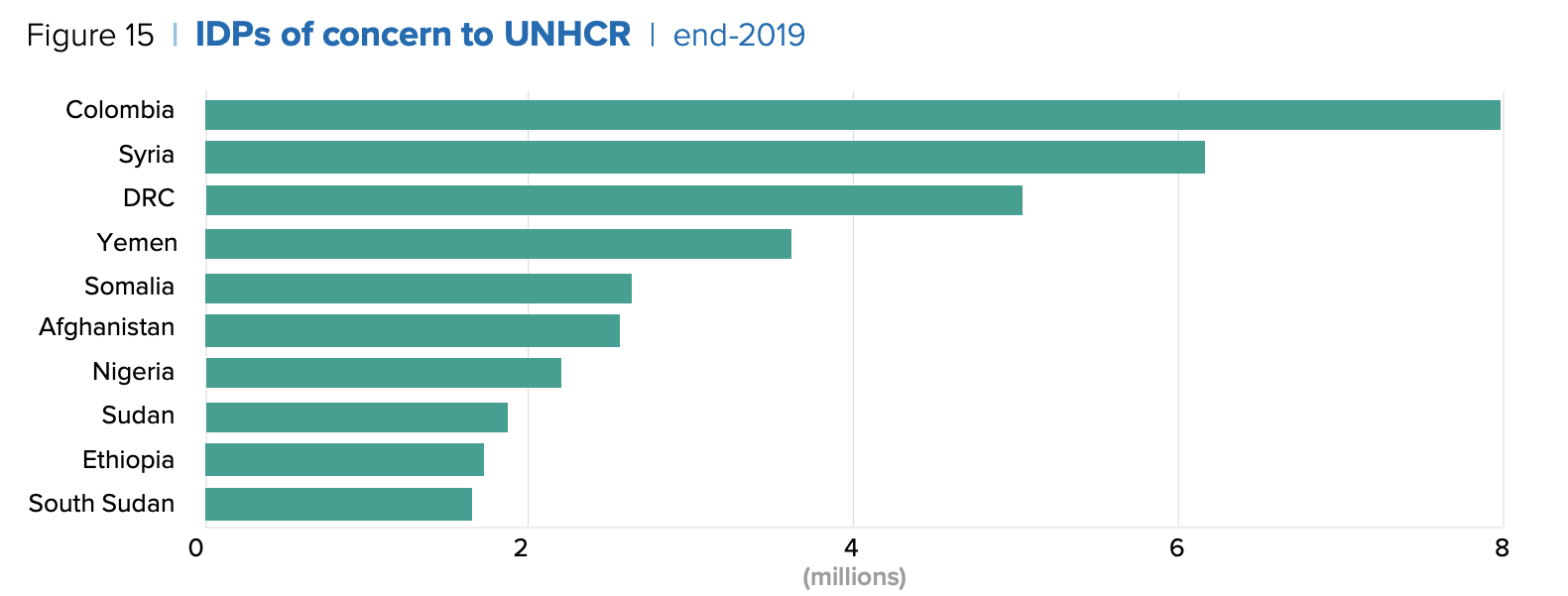Armed attacks on DRC
Armed attacks on the Democratic Republic of Congo
Ongoing violence in The Democratic Republic of the Congo (DRC) is creating further displacement of innocent civilians. Recent attacks carried out by armed groups in the eastern part of the DRC have led to tens of thousands of people being forced to flee from their homes in search of safety (UNHCR, 2020b).
The DRC’s history is long and complex, consisting of political unrest and unrelenting violence. Despite being one of Sub-Saharan Africa’s largest countries and possessing vast amounts of mineral ores (Mercy Corps, 2020) it remains one of the poorest countries in the world. It is estimated that in the DRC only 43% of people have access to drinking water, whilst 20% of households have the use of proper sanitation (The World Bank, 2020).
The recent attacks in the North Kivu and Ituri provinces have led to upwards of 50,000 people becoming displaced. The brutal violence which plagues the area includes reports of killings, sexual violence, mutilation and recruitment of children into militia groups. Villages are looted and burned, leaving those escaping and seeking refuge with an overwhelming sense of fear and panic. With such atrocities being committed, returning to their homes becomes a terrifying prospect (UNHCR, 2020b). Unfortunately, such occurrences are ongoing in the DRC.
By the end of 2019, the United Nations High Commissioner for Refugees’ (UNHRC) report on forced displacement (2019) stated that over five million people in the DRC were being internally displaced. This is the highest number of internally displaced people (IDPs) in Africa, and the third highest in the world.
The effect of internal displacement on a country is great. It gives way for increased demand of aid, and creates ‘specific needs and vulnerabilities’ (UNHCR, 2019a). The Congolese town, Mangina, which was already struggling to meet the basic needs of those who live there, now carries a further burden of hosting the IDPs who were victims of the recent attack in the eastern part of the country (UNHCR, 2020b).
Endemic violence often affects the vulnerable in the community the most. In the DRC, children are continually one of the most affected groups as a result of internal displacement (UNHCR, 2019a). Children are put at risk of being killed, recruited into militias, and being sexually assaulted. Children also lose access to education; attacks on more than sixty schools have left 45,000 children without classrooms (UNICEF, 2020). Women also fall amongst one of the most affected groups, who as a result of displacement are more susceptible to being victims of sexual and gender-based violence (UNHCR, 2020a).
In addition to IDPs, the DRC also hosts over half a million refugees from neighboring countries, more than half of these being women and children. These refugees predominantly come from: Rwanda, the Central African Republic, South Sudan, and Burundi (UNHCR, 2020a).
The weight of having such a vast number of displaced people in the DRC within an undetermined and unstable socio-political climate, places significant pressure on organizations to provide aid. Currently, aid is being provided by a number of parties, including UNHRC, humanitarian organizations, and local authorities (UNHCR, 2020b). Several types of aid are delivered, namely: Food, water, sanitation, healthcare, shelter, protection, and education. In addition to the escalation of violence increasing the need of aid, the UNHCR requires further funding, having received just 60% of the $168.2 million needed to respond to this humanitarian crisis (UNHCR, 2020b).
As well as internal displacement, many Congolese people escape the dire conditions of their homes to neighboring countries. According to The Democratic Republic of the Congo Regional Refugee Response Plan 2020-2021 (DRC RRRP 2020-2021) (UNHCR, 2019b), there were 905,573 Congolese refugees in the Southern and Great Lakes regions in Africa. The DRC RRRP 2020-2021 has been developed to ensure refugees are protected in the host countries, and that the host countries themselves are prepared for refugee arrivals. The response plan is important in that it addresses ways in which assistance can be carried out by the host countries themselves, as opposed to reliance on humanitarian aid.
The ongoing crisis in the DRC is one which cannot be resolved easily. Despite the presidential elections in 2018 bringing about some hope for eventual political resolution, the rampant violence and appalling human right abuses continually carried out, particularly in the eastern provinces, leave reason for major global concern about the Congolese people’s future.

Article by
Costadina Tsoukala-Steggell

Categories
Africa, Categories, Countries, Democratic Republic of the Congo, Human rights, News, Statistics




